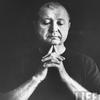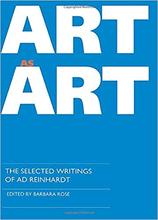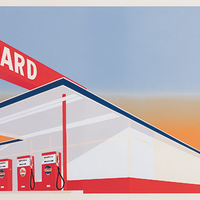More about Abstract Painting
- All
- Info
- Shop

Contributor
Ad Reinhardt's Abstract Painting, to which the Guggenheim ascribes an approximate date range of 1960-66, illustrates the limit of a particular variety of abstract painting.
The Guggenheim's website juxtaposes the painting with a mini-essay by Nancy Spector which name-drops spiritual movements one after another, from Platonism to Christianity to Islam and Zen, before mentioning Reinhardt's background in leftist political art, which he made before his abstract works. Like Andy Warhol and David Hammons, Reinhardt produces work which makes people question the limits of art. Some people gasp in awe and other people laugh scornfully. It is only art if, like Hammons, you don't think there is such a thing as "bad art," and if you've ever done oil painting, you know that filling a canvas with one even, solid color is actually a serious challenge.
1967 was the year of the Monterey Pop Festival, the year Californians elected the star of Bedtime for Bonzo as governor , the year Dr. King renounced the war in Vietnam. It was also the culmination of the fourteen-year cycle of Reinhardt Black Paintings, which, influenced by Kazimir Malevich, dominated the abstract market.
If you appreciate the monochromatic music of John Cage or Steve Reich, you can appreciate Reinhardt's Abstract Painting as, “a full spectrum (…) in the lowest possible tonal register.” If you can't, you can still invest in a Reinhardt painting, relatively certain that it will appreciate in value.
It's hard to believe that Abstract Painting would be a great work of art, because, at first, you might think it is creatively lazy, an easy way out. But consider how much a canvas reflects the variability of a person's hand, how every stroke is different, and it helps you to appreciate Reinhardt's work. Abstract Painting also helps to explain why art schools teach philosophy: it's hard to restrict your reading of Reinhardt's work enough to leave out his interest in philosophy, which parallel those of Piet Mondrian, one of his influences. After early leftist political investigations, Reinhardt moved into mysticism, which taught him that it is not possible to make a statement about the divine without a gesture beyond the physical senses. Reinhardt found that in both Zen Buddhism and the Abrahamic tradition, there is a special role for nothingness, because nothingness is absolutely indeterminate, and therefore original. In Judaism it is called ein-sof barchu, the sacred infinite. The color black absorbs all other colors and represents the ceremony. "There is a black which is old and a black which is fresh."
It's a good idea to track down some of Reinhardt's writing, either by purchasing it or ordering it from your local public interlibrary loan system. Significant works of art in their own right, the Reinhardt writings establish a particularly special relationship with the black paintings. They are collected in a 1991 volume, Art-as-art, from Viking Press.
Sources
- Diawara, Manthia. "On David Hammons." Mar. 3, 2017, YouTube Video, https://youtu.be/WhwMYkSW564.
- Frelik, Edyta. "Ad Reinhardt: Painter-as-Writer." American Art 28, no. 3 (2014): 104-125.
- Peiffer, Prudence. "OPENING LINES: THE DRAWINGS OF AD REINHARDT." ArtForum, Feb. 2012, https://www.artforum.com/print/201202/opening-lines-the-drawings-of-ad-….
- Reinhardt, Adolph Dietrich Friedrich. “Black as Symbol and Concept.” Art-as-Art: The Selected Writings of Ad Reinhardt (New York: Viking Press, 1975).
- Storr, Robert. “Curator Robert Storr on Ad Reinhardt at David Zwirner, New York.” Nov. 12, 2013, YouTube Video, https://youtu.be/diaOT5bzRzQ.














Ad Reinhardt is such a fascinating painter because his painting throughout the internet look like just a canvas painted all one color. However, upon further research--or even better, seeing them in person--one can see the depth in color throughout the slight nuances of color field painting. Because of this, Reinhardt uses depth in color but not depth in perspective, unlike other color field painters such as Hans Hofmann. Thus, his work appears flat to the eye; there is no dimension to grasp. This is because Reinhardt adhered to Greenberg's definition of modernism and purity. Through this purification process, Reinhardt created twelve rules for painting. One of these included a lack of depth, which better explains why Reinhardt would avoid geometrical perspective within his work.